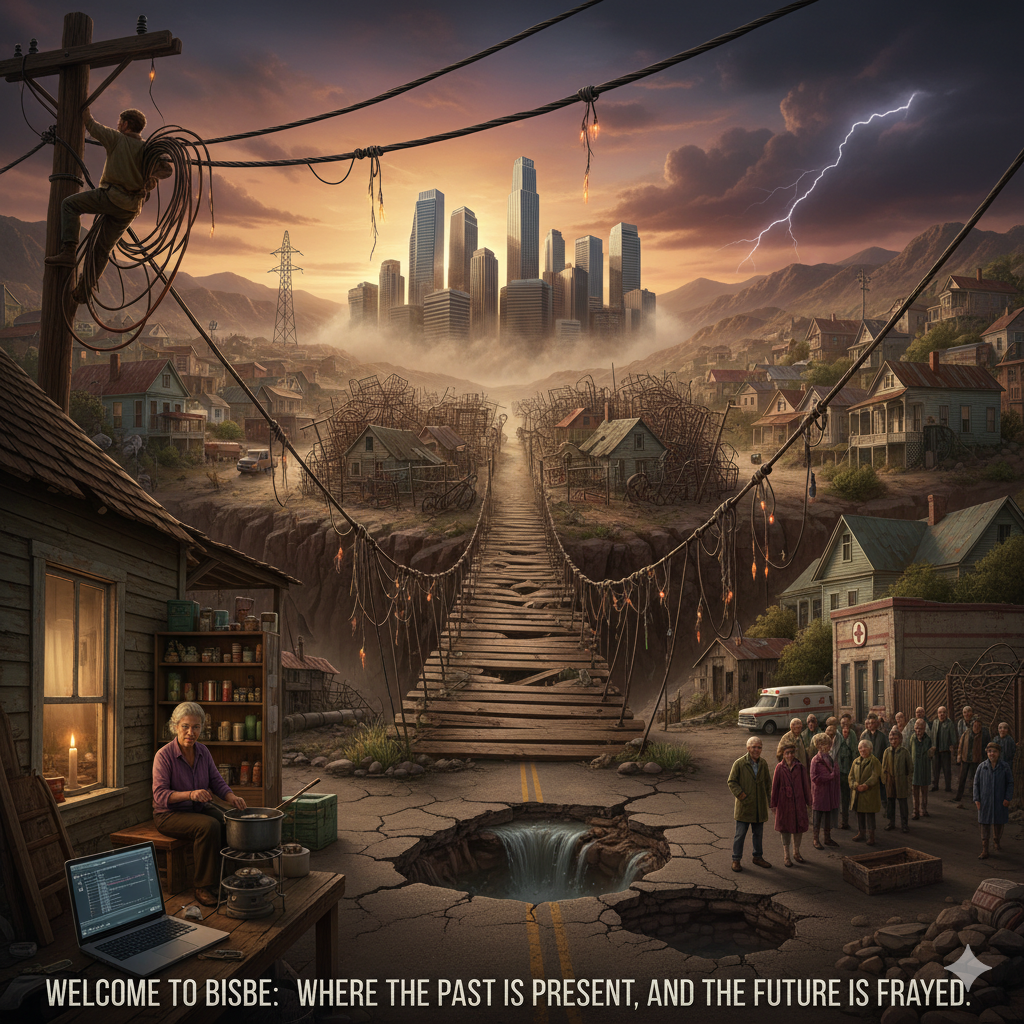Last updated on October 29, 2025
If the job market is a mirage and the housing is a trap, the town’s basic infrastructure is the rickety, termite-eaten bridge you must cross to get to them. From the outside, you see the charming patina of age. Once you live here, you realize that “patina” is just a polite word for decay. Living in Bisbee is not like stepping back to a simpler time; it’s like being shackled to the failing systems of a century ago. Every modern convenience you take for granted is, in Bisbee, a fragile and unpredictable luxury.
Let’s start with the internet, the umbilical cord of modern life and the foundation of the “work-from-home” fantasy. In Bisbee, this cord is frayed and constantly threatening to snap. The options are universally terrible. You can have slow, unreliable DSL that cuts out whenever the wind blows, or you can opt for satellite internet with crippling data caps and latency so high that a simple video call becomes a series of frozen screens and garbled audio. The mountainous terrain creates dead zones where even these subpar services can’t reach. The idea of seamlessly running an online business or holding a high-stakes remote job from here is a dangerous fiction. You will spend more time troubleshooting your connection than you will working.
The decay runs deeper than just the digital realm. The physical pipes and wires that hold the town together are just as decrepit. The water and sewer systems are a century old, a maze of brittle, corroding pipes prone to frequent and catastrophic breaks. It is not uncommon for entire sections of town to lose water for days at a time while crews scramble to patch yet another leak in a system that is long past its expiration date. The roads are a patchwork of asphalt and potholes, with narrow, winding streets in the historic areas that are actively hostile to modern vehicles and a constant danger to pedestrians.
Then there is the issue of healthcare, a critical piece of infrastructure for any community, especially one popular with retirees. Bisbee has one small, critical-access hospital, the Copper Queen. While capable of handling basic emergencies, it is not equipped for serious medical issues or specialized care. For anything from a cardiology appointment to cancer treatment, you will be making the 90-minute drive to Tucson, a journey that can be arduous and, in a true emergency, life-threatening. This lack of robust medical care is a non-negotiable deal-breaker for anyone with chronic health conditions or those simply planning to age with a reasonable safety net.
Even the power grid feels like a relic. The frequent and violent monsoon storms that roll through every summer regularly knock out power, sometimes for extended periods. The infrastructure is simply not robust enough to handle the region’s extreme weather. You will learn to live by candlelight and keep a stockpile of non-perishable food, not out of a quaint desire for a rustic lifestyle, but out of grim necessity.
This is not the charming, simple life you were promised. It is a life of constant inconvenience and adaptation to failing systems. Every day presents a new challenge: Will the internet work? Will the water be on? Will the road be passable? These are not questions people in a developed, 21st-century nation should have to ask themselves on a daily basis.
The immense cost of upgrading this infrastructure is something a small town with a nonexistent tax base can never hope to afford. There is no grand plan for modernization on the horizon. The strategy is to patch, pray, and hope it holds together for one more day. The slow, inexorable decline is the town’s baseline reality. When you move to Bisbee, you are not just buying an old house; you are buying into a whole ecosystem of decay. You are choosing to live in a museum that is slowly falling apart, and you are paying for the privilege.
